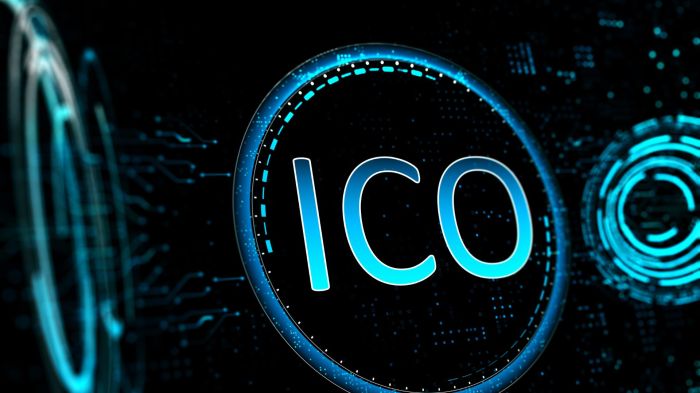Telegram’s ICO
Telegram, the popular messaging app known for its emphasis on privacy and security, embarked on an unprecedented journey in 2017 by launching an Initial Coin Offering (ICO). This event, which aimed to raise funds for the development of its blockchain platform, became a watershed moment in the history of cryptocurrency and garnered widespread attention.
Telegram’s History and Initial Purpose
Telegram’s origins can be traced back to 2013, when it was founded by brothers Nikolai and Pavel Durov, who were also behind the Russian social networking site VK. The initial goal was to create a secure and reliable messaging platform that would offer users a more private alternative to existing options like WhatsApp and Facebook Messenger. Telegram’s focus on encryption and its commitment to user privacy quickly resonated with a growing audience, contributing to its rapid adoption.
The Telegram Token
The Telegram token, known as GRAM, was a crucial element in the Telegram Open Network (TON) project. It was designed to be a decentralized, secure, and scalable cryptocurrency that would power the TON ecosystem.
Purpose and Functionality
The GRAM token was intended to serve as the native currency for the TON blockchain, facilitating transactions and interactions within the network. Its primary functions included:
- Payment for services: GRAM would be used to pay for services and products offered within the TON ecosystem, such as decentralized applications (dApps), messaging services, and content delivery.
- Staking: Holders of GRAM could have participated in the network’s consensus mechanism by staking their tokens, earning rewards for contributing to the security and stability of the TON blockchain.
- Governance: GRAM holders could have potentially had a say in the future development and governance of the TON network through a decentralized voting system.
Use Cases
Telegram envisioned several use cases for the GRAM token within its ecosystem, leveraging its capabilities for a wide range of applications:
- Decentralized applications (dApps): Developers could have built dApps on the TON blockchain, utilizing GRAM as the primary currency for transactions and interactions within these applications.
- Content creation and distribution: Creators could have used GRAM to monetize their content on the TON platform, receiving payments directly from users or subscribers.
- Micropayments: GRAM’s fast and efficient transaction capabilities could have enabled micropayments for various services, such as online gaming, content streaming, and social media interactions.
- Cross-border payments: The decentralized nature of the TON blockchain could have facilitated fast and cost-effective cross-border payments using GRAM, potentially reducing reliance on traditional financial institutions.
Distribution and Allocation Plan
The GRAM token was planned to be distributed through a multi-stage process:
- Initial Coin Offering (ICO): The initial distribution of GRAM tokens was intended to take place through a private pre-sale and a public token sale, raising a substantial amount of funds for the development of the TON project.
- Community Grants: A portion of the GRAM tokens was reserved for community grants, supporting the development and adoption of the TON ecosystem.
- Team and Development: A portion of the tokens was allocated to the Telegram team and developers to ensure the project’s continued development and success.
The ICO’s Impact on the Cryptocurrency Market
The Telegram ICO, which raised a staggering $1.2 billion, had a significant impact on the cryptocurrency market. Its success, coupled with its innovative approach to tokenization, propelled the growth of the ICO market and spurred widespread adoption of blockchain technology.
Telegram ICO’s Role in Popularizing Tokenized Platforms
Telegram’s ICO played a crucial role in popularizing the concept of tokenized platforms. It demonstrated the potential for projects to raise substantial capital through token sales, thereby funding their development and expansion. By offering a utility token with real-world applications within its ecosystem, Telegram showed that tokens could go beyond simple fundraising tools and become integral parts of decentralized platforms. This paved the way for other projects to follow suit, leading to a surge in the number of tokenized platforms across various industries.
Comparison to Other Successful ICOs of the Era
The Telegram ICO stands out as one of the most successful ICOs of its time. It surpassed the fundraising records of other notable ICOs, such as Filecoin, which raised $257 million, and EOS, which raised $4 billion.
The Telegram ICO’s success can be attributed to several factors, including its strong brand recognition, a large and active user base, and a well-defined use case for its token.
While other ICOs focused on fundraising, Telegram’s ICO emphasized the token’s utility within its platform. This approach resonated with investors, contributing to its massive success.
Challenges and Controversy Surrounding the ICO: Telegram Ico Raise Staggering 1 2 Billion
The Telegram ICO, while generating immense hype and attracting substantial investment, wasn’t without its share of challenges and controversies. These issues raised concerns about the project’s legitimacy and its potential impact on the cryptocurrency market.
Regulatory Challenges
The Telegram ICO faced significant regulatory scrutiny, primarily due to the lack of clear regulations governing token sales at the time. The ICO raised $1.7 billion from investors worldwide, making it one of the largest token offerings ever. However, the lack of established regulatory frameworks for ICOs created uncertainty and potential legal risks for both Telegram and its investors.
- The Securities and Exchange Commission (SEC) in the United States, for example, issued guidance indicating that many ICOs could be classified as securities offerings, requiring registration and compliance with federal securities laws. This posed a challenge for Telegram, as it intended to sell its tokens to a broad range of investors, including those in the United States.
- Regulators in other jurisdictions, such as China and South Korea, also took steps to restrict or ban ICOs, citing concerns about market manipulation and investor protection. This added to the regulatory challenges faced by Telegram.
Legal Disputes and Investigations, Telegram ico raise staggering 1 2 billion
The regulatory challenges surrounding the Telegram ICO led to legal disputes and investigations. The SEC launched an investigation into the Telegram ICO in 2019, alleging that the company had violated securities laws by selling unregistered securities to investors.
- The SEC argued that Telegram’s GRAM tokens, which were to be used on its blockchain platform, were considered securities under U.S. law. The agency alleged that Telegram had failed to register its token sale with the SEC and had not provided investors with adequate disclosures.
- The investigation resulted in a settlement agreement in 2020, where Telegram agreed to pay a $18.5 million penalty to the SEC and to return all of the funds it had raised from U.S. investors. This settlement marked a significant victory for the SEC in its efforts to regulate the ICO market.
Impact on Timeline and Development
The regulatory challenges and legal disputes had a significant impact on Telegram’s timeline and development. The SEC investigation delayed the launch of Telegram’s blockchain platform, TON (Telegram Open Network), which was initially scheduled for 2019.
- The SEC’s action forced Telegram to abandon its plans to launch TON in the United States and to focus on developing the platform in other jurisdictions.
- The legal battles also consumed significant resources and diverted attention from Telegram’s core development efforts. These challenges ultimately contributed to the decision to cancel the TON project in 2020.
The Future of Telegram and its Token
The Telegram Open Network (TON) project, initially envisioned as a decentralized platform powered by the GRAM token, has faced significant challenges and regulatory scrutiny. The future of Telegram and its token remains uncertain, though the company continues to explore avenues for leveraging blockchain technology.
The Current Status of GRAM and Future Plans
Following the Securities and Exchange Commission (SEC) lawsuit in 2019, Telegram abandoned its initial plans for a public token sale and the launch of the TON blockchain. The company has since shifted its focus to developing a decentralized platform, focusing on privacy-focused messaging and decentralized applications. However, the GRAM token has not been officially launched, and its future remains unclear.
The Potential Impact of Regulatory Developments on GRAM Adoption
Regulatory uncertainty surrounding cryptocurrencies and blockchain technology continues to be a significant hurdle for the widespread adoption of GRAM. The SEC’s stance on digital assets and the lack of clear regulatory frameworks in many jurisdictions could hinder the token’s future. For example, if the SEC were to classify GRAM as a security, it would likely face stricter regulations, potentially limiting its use and value.
Comparison of Telegram’s Tokenized Ecosystem to its Initial Vision
Telegram’s initial vision for TON involved a decentralized ecosystem with a range of applications built on the blockchain. The company envisioned a robust network for payments, messaging, and decentralized services. However, the current status of the project falls short of this initial vision. While Telegram continues to explore blockchain technology, the focus has shifted away from a fully decentralized platform with a public token. The lack of a widely available GRAM token has limited the development of a thriving tokenized ecosystem.
Telegram ico raise staggering 1 2 billion – The Telegram ICO saga is a fascinating chapter in the history of crypto. While the project ultimately faced regulatory hurdles and delays, the sheer scale of the fundraising and the ambitions behind it left an undeniable mark on the industry. It highlighted the potential of tokenized platforms while also raising important questions about regulation and the future of decentralized technologies.
Telegram’s ICO raised a staggering $1.2 billion, showing the immense potential of blockchain technology. While Telegram is focusing on building a decentralized future, Apple has spent $38 million on Apple Watch advertising in the last month , proving that traditional companies are still investing heavily in marketing their products. This contrast highlights the evolving landscape of technology and how both decentralized and traditional approaches are vying for a place in the future.
 Standi Techno News
Standi Techno News

